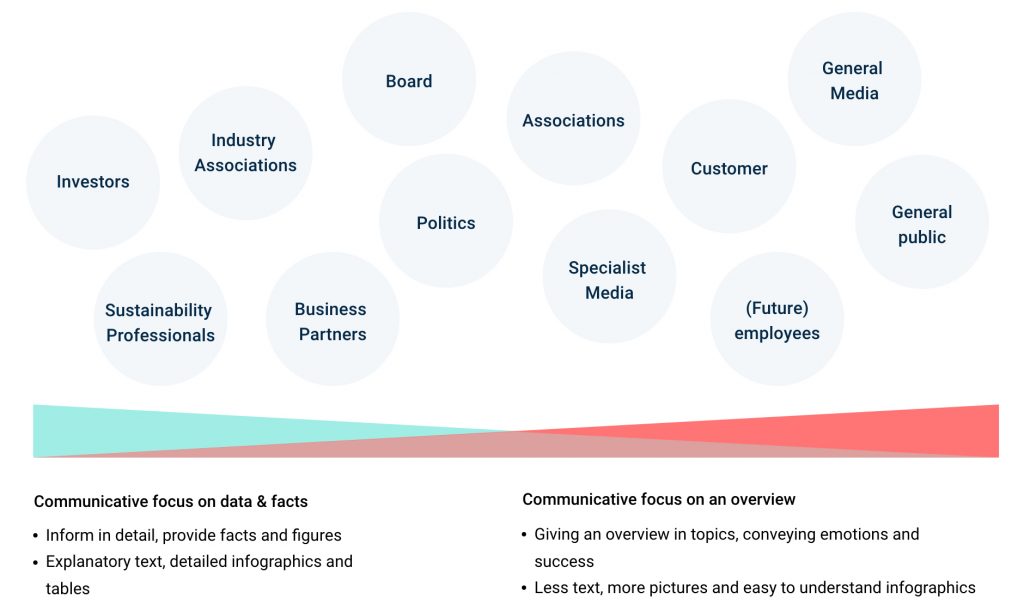Chapter 08
Communicate! How to tell your story.
Interestingly, any communication on the sustainability of an organization will be subject to scrutiny. At least if you’re not the UN, the suspicion of greenwashing is easily at hand. At the same time, however, there are only a few stories that can be as engaging as those about saving the world.
After this chapter, you…
- know what to (not) do when communicating your sustainability efforts
- should be sensitized for the need to provide some basic level of transparency
- know which target groups require what sort of communicative content
Do’s and dont’s
To leverage the power of sustainability communication for your reputation, brand image, or marketing efforts, there are a few things that you should consider. Here are five tips on what you should do and another five things you should not do.
Make transparency your backbone
If you have to be naked, you had better be buff.
– Don Tapscott
Goes a famous quote from the book The Naked Corporation: How the Age of Transparency Will Revolutionize Business.
In the past years, we have seen extraordinary levels of transparency: businesses make themselves clearly visible to shareholders, customers, employees, partners, and society. Financial data, employee grievances, environmental flaws, product weaknesses, good news, and bad; today, they all can basically be seen by anyone who knows where to look.
For any proactive sustainability communication to work out, you must make sure to get the basics right. That means to provide at least to some degree a level of transparency allowing stakeholders to get an authentic impression of your social, ecological, and economic performance.
Put some of this information on your website. If you need guidance on what sort of information stakeholders might be interested in, you can either consult SASB or the Global Reporting Initiative (GRI).
Beyond this basic level of transparency, different target groups will require different forms of information. While in order to convince your investors, you will need to focus your communicative efforts on providing facts and much data, getting media coverage will only succeed if you have a great story to tell.


